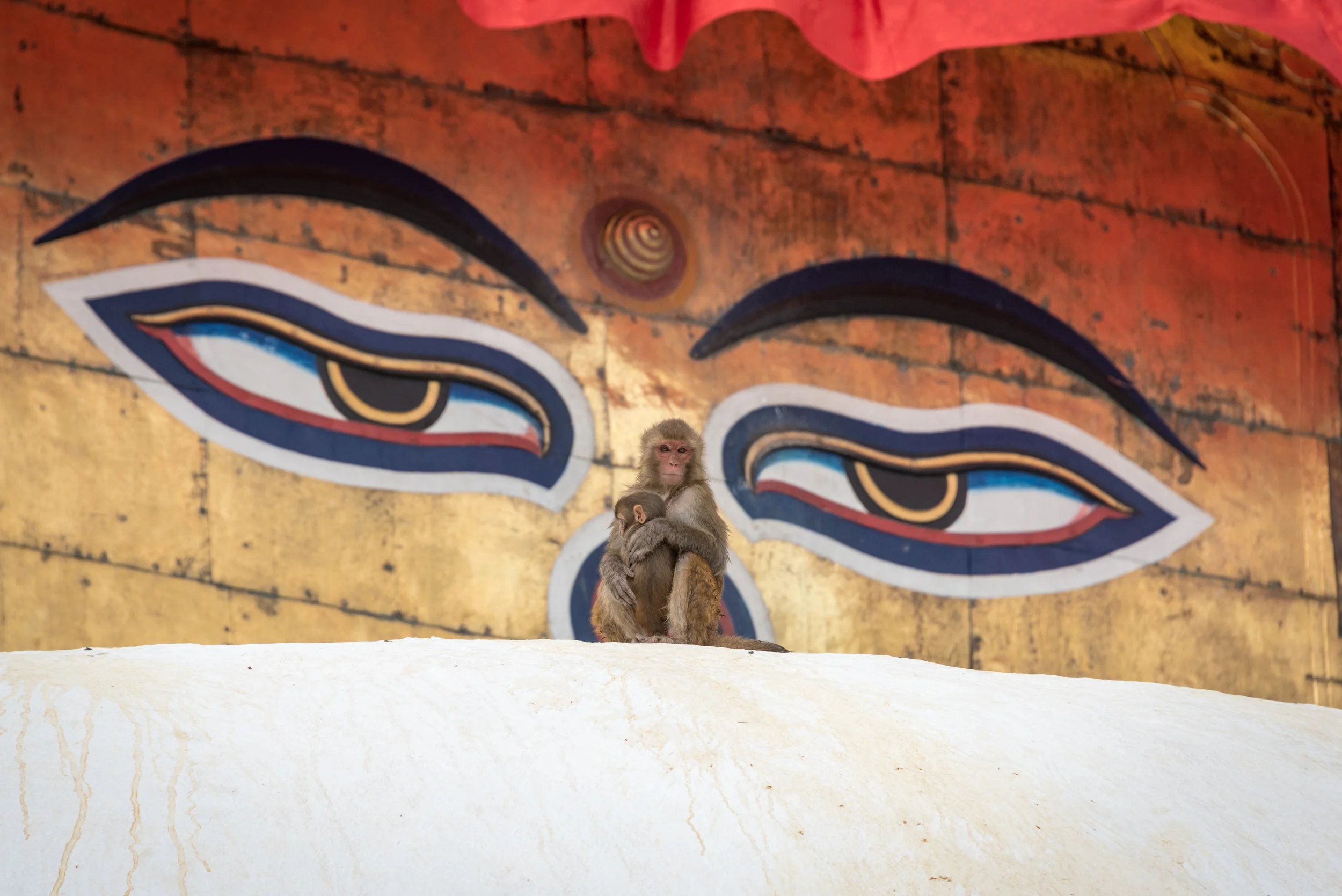As we touched down in Kathmandu, Nepal, we were promptly greeted by 3 separate customs lines, for each of which we found ourselves to be in the “slow lane.” 3 hours later, we were finally on our way into Thamel, the backpacker/tourist district of busy Kathmandu. The taxi ride into town was filled with all the sights and sounds I’ve grown accustomed to in my travels: cars, motorbikes, bicycles, people, animals all occupying the plot of the road they deemed to be theirs, with more than a comfortable amount of overlap. Unprotected lefts, rights, straights, you name it. Roundabouts where the best option was to close your eyes and go. All the natural driving phenomenon you can find in most places outside of the West. I laughed to myself as we made it through one particular roundabout no bigger than a mall merry-go-round, packed with all of the participants mentioned above plus some religious shrine at the center, as smoothly as if we were the only ones on the road. I immediately thought of the recent “roundabout” that was put in near my old neighborhood in San Francisco, that for some reason still had a STOP sign in combination with the roundabout. Naturally, there were tire marks all over the makeshift garden placed at the center of the unsuccessful attempt at improving traffic flow.
I was expecting an environment akin to the large cities I’d visited in India, and I was not mistaken, though everything here seems to be toned down a bit from my experiences in India. The buildings are smaller, the horns not quite as loud, the hawkers a bit more subdued. Make no mistake, however, the chaos still rivals the neighbors to the south. Walking onto Indra Chowk, a main thoroughfare, we were thrust directly into the middle of a street packed to the gills with 90% people, 9% cars, and 1% whatever needed to be sold. Fabrics, fruits, vegetables, flowers, electronics, lassis, teas, spices, copper pots, you name it, all within shouting distance (if it wasn’t so loud), or quickly down an alley/maze. It’s a good thing Nepal isn’t known for pick-pocketing, as the proximity of everyone to everything would make it easy pickings. Our tour of the area, thanks to an art “student” looking to practice his English and maybe show us his art school (of course), brought us to many a Stupa spread throughout the city. Some old and rundown, some with fresh coats of paint, the shrines scattered throughout were often times located through small doorways or alleys that at first looked quite suspicious, but opened up into tranquil areas removed from the chaos outside. Many of the shrines are a mix of Buddhist and Hindu, as the two religions co-exist in the city. A few of the major stupas and temples were damaged quite badly during the earthquake in 2015, in particular Durbar Square, where many of the buildings are either under renovation or being precariously held up by wooden beams.
A quick taxi ride away from the buzzing tourist district brought us to the Monkey Temple. Now, I’ve had my share of experiences with these so-called Monkey Temples, and they usually end up with something from my backpack in the hands of a hard-bargaining monkey/heathen, so I was prepared. After what seemed like an endless staircase that belonged in our upcoming Himalayan trek moreso than in a major metropolis, we arrived atop a hill looking over the sprawling city. The middle contained a large stupa, equipped with the traditional 4 sets of eyes looking in all directions, painted white aside from the gold adornments on the top and corners, and, you guessed it, covered in monkeys. Thankfully, these monkeys wanted nothing to do with my belongings, and kept to themselves for the most part, unless you were in their anticipated leaping route. We made our way around the stupa (always clockwise), twirling the prayer bells as we passed, reflecting on the ubiquitous 6 syllable mantra: Om Mani Padme Hum
Amidst the chaos and delays, we were off to a great start.





